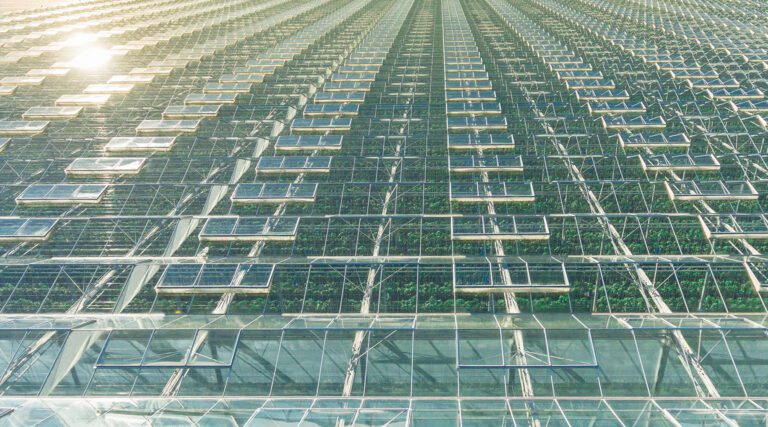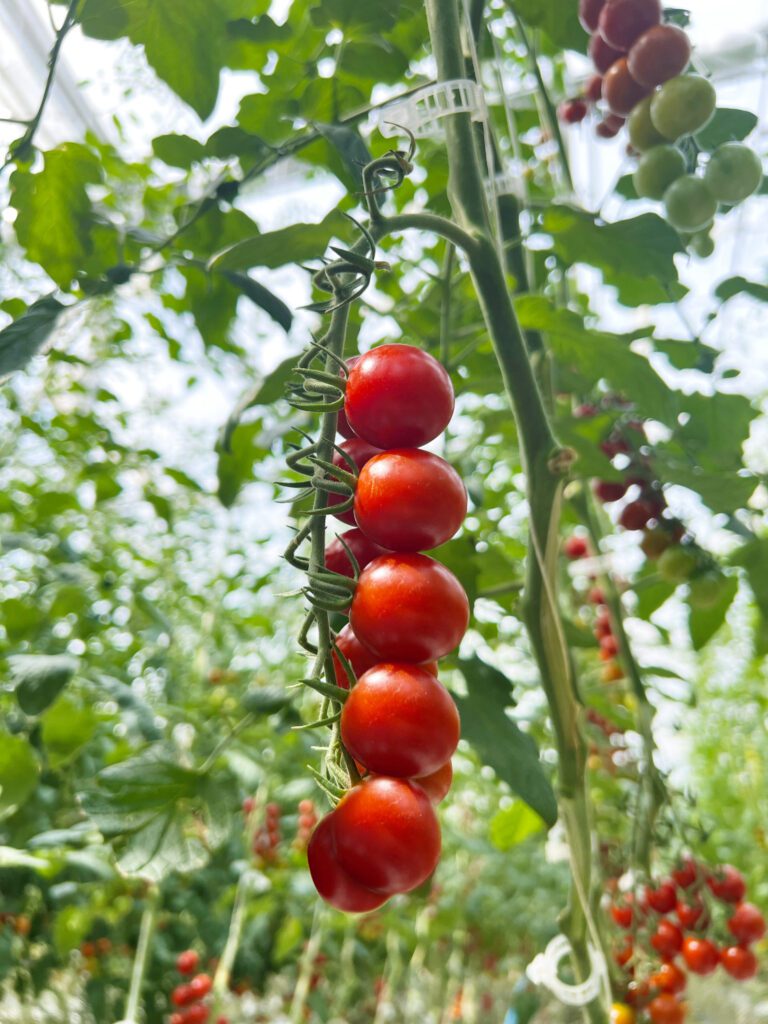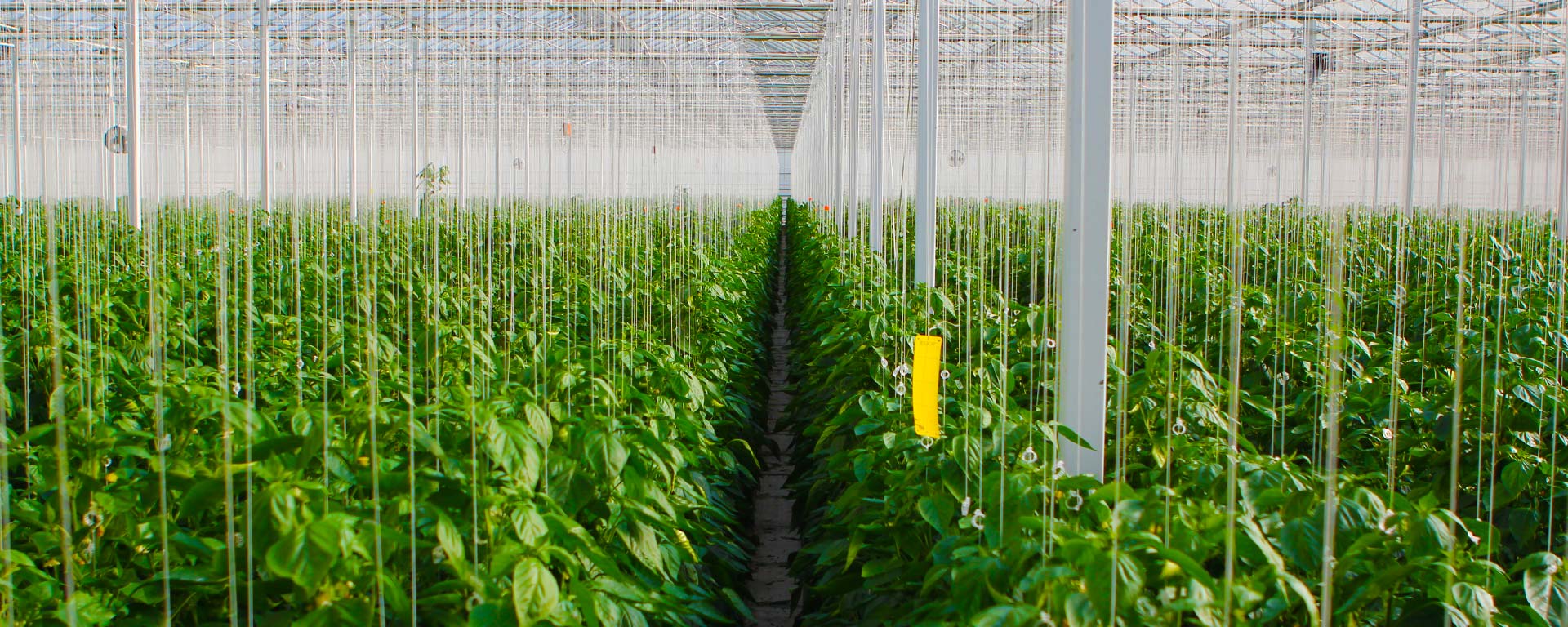
Inside Our Climate Control Technologies
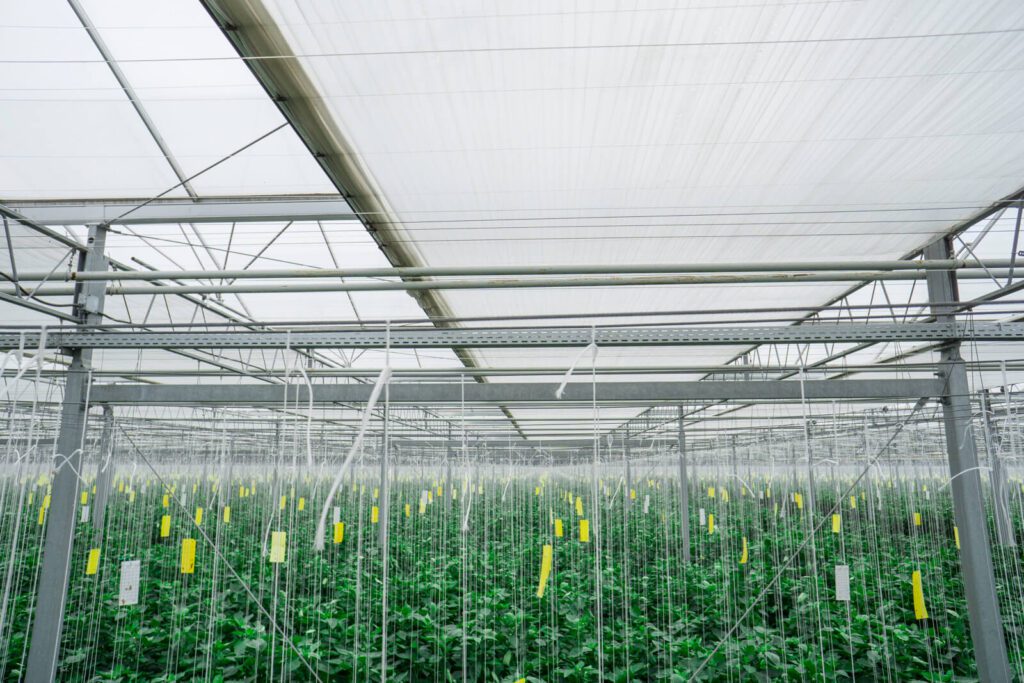
Visit any glass greenhouse built in the last 15 years or so, look up, and you will likely see energy screens, or energy curtains, installed above the crop. Energy screen technology has become a necessary part of greenhouse operational design – these curtains play an important role in conserving energy, managing greenhouse climates, and helping us grow year-round.
What Are Energy Screens
Energy screens are polyester cloth curtains installed horizontally to span the entire area of a greenhouse – they are placed above the crop and below the greenhouse peaks. Where the screens are installed, there is still about two meters of open space between the maximum height of the crop and the bottom of the polyester cloth screen – this ensures our plants are still able to grow to their maximum height.
Energy screens provide a translucent divider that comes between the crop and the sun’s rays. When choosing what energy screen to install, it’s important to choose a screen that strikes a good balance between the amount of light it lets in to the greenhouse and the amount of energy it saves. There are many different energy screen types to choose from, so it’s important for our Growing team to know the pros and cons of each type to make an educated decision.
Almost all commercial-sized greenhouses built today are made of glass – this is because glass structures allow more natural sunlight to enter the greenhouse, which generally results in higher production levels from the crops. Although glass lets in more sunlight, it is not known for its properties as an insulator. This is why energy screens have become an important technology used in glass greenhouses – they help keep cold air out of the greenhouse, and warm air inside of it. Without energy screens, we would not be able to effectively maintain desired temperatures within our glass greenhouses all year round.
When Do We Use Energy Screens In Our Greenhouses?
Energy screens are used strategically throughout the year for different purposes, depending on a Grower’s crop strategy.
When energy screens are closed, a barrier is created that keeps warm air inside a greenhouse, and cold air trapped between the top of the cloth and the greenhouse peaks. The screens also act as a shade when they are closed. When energy screens are open, internal greenhouse temperatures can fluctuate and air can freely circulate.
Winter Growing
We use our energy screens the most throughout the coldest months of the year. During the winter, we keep our energy screens closed to keep warm air inside the greenhouse and cold air out. The use of energy screens is also important during the winter months to conserve energy – colder external temperatures mean we need to keep as much heat inside the greenhouse as possible, and the less heat we must create ourselves, the more energy we save.
Since energy screens keep warm air within the greenhouse, we do not need to create as much heat using our natural gas or biomass boiler systems when our energy screens are closed. Without the help of energy screens, our Energy team would need to use over 40% more energy than is currently used if we wanted to create optimal growing conditions for our plants.
Spring & Fall Growing
During the spring and fall, when temperatures outside are not drastically warm or cold, we opt to use our energy screens as shade curtains during the day. This helps to protect our crops from getting sunburnt while still maintaining proper internal temperatures in our facilities.
Summer Growing
In the summer, there is more than enough natural heat created by the sun, so we do not close our energy screens during hot summer days – if we were to close our screens at this time, they would keep too much warm air inside the greenhouse and negatively alter the internal climate. To keep the plants shaded, we apply a thin coating to the outside of the glass that diffuses the sun’s rays.
How Do Energy Screens Work?
Using PRIVA, our Growers control and monitor our energy screen technology to make sure it is being used efficiently and effectively. To make changes to the energy screen settings, our Growers can either update the system at PRIVA terminals stationed throughout our facilities, or on their work station computers or smartphones.
At certain times of the year, our Growers use different strategies to utilize our energy screens in the most applicable ways. There are three major energy screen strategies used by our Growing team:
- Energy strategy
- Shading strategy
- Gapping strategy
Energy Strategy
When implementing an energy strategy, our Growers set certain influences within the PRIVA system related to temperature and sunlight levels. For example, once we reach x amount of light wattage coming into the greenhouse on a certain day, or x degrees outside the greenhouse,the energy screens will open or close automatically. These actions are designed to help us save on our energy usage.
Our Growers need to be incredibly detailed when it comes to changing settings in PRIVA – there are many different factors that the system analyzes and considers when performing an action. It is up to our Growing team to carefully read our data and make small adjustments within the PRIVA system so that we can get the best outcome possible and fine-tune our growing processes.
Shading Strategy
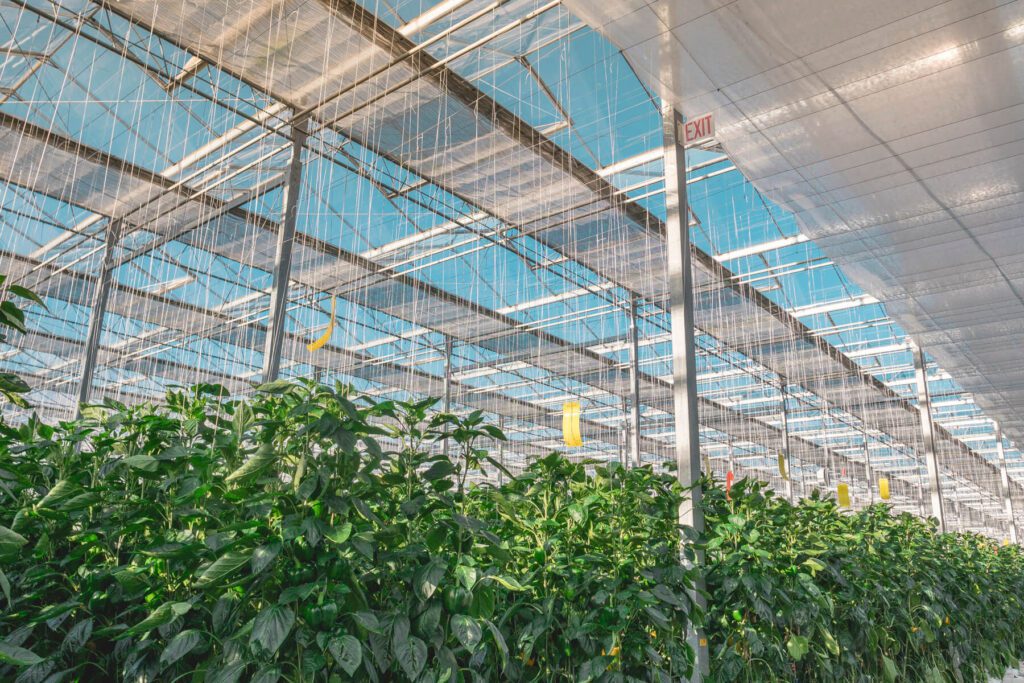
The implementation of this strategy is solely based on sunlight levels – our Growers will tell PRIVA to close the screens once x amount of light wattage is reached. If it is not a particularly sunny day, the screens may remain open because we haven’t reached that maximum unit of light; they may also open if it clouds over later in the day.
Having a strategic plan for shading is essential in glass greenhouses – glass allows for more sunlight to directly hit the crop, which means it is easy for a crop to get too much sunlight. By providing shade for the plants using energy screens, our crops are given an opportunity to rest and are protected from getting sunburnt.
Gapping Strategy
An important part of controlling the climate in glass greenhouses involves implementing an energy screen gapping strategy. A gapping strategy allows for humidity and temperature levels to be managed – when energy screens are closed, and the temperature is becoming too warm inside the greenhouse, our Growers can open the screens at a certain rate to slowly let cooler air enter the greenhouse environment.
We have sensors placed inside the peaks of our greenhouses that communicate temperature levels to the PRIVA system – our Growers can read these levels and open or close the screens accordingly. By reading this data, our Growers can ensure temperature shifts in the greenhouse are implemented smoothly and at a gradual pace – if temperature shifts are too abrupt, the crops can’t properly adjust to the change and may be damaged or stressed.
Energy Efficiency At Work
Energy screens help us maintain a stable climate within our greenhouses, make our heating more cost efficient, and allow us to grow year-round. As NatureFresh™ Farms continues to expand our operations, installing energy screen technology in every new greenhouse facility we build will be an important part of our ongoing energy strategy.
It is important to note that the technology our team adopts must always align with our company’s values – and since energy screens protect both our plants and the planet, they are an innovation we can easily support.

